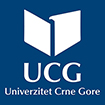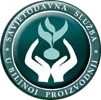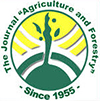About project
.jpg) Mosquito vectors and mosquito-borne diseases are raising threat to Europe, which impact strength is difficult to predict.
Mosquito vectors and mosquito-borne diseases are raising threat to Europe, which impact strength is difficult to predict.
Their surveillance and control require efficient and appropriately standardised methods, integrated knowledge and awareness among researchers, academic educators and policy-makers.
The main idea that led us to propose this HERIC-CRDS project is to endorse exchange of knowledge and methodologies, improve higher education, facilitate training of next generation experts, improve the national policies, produce innovation and disseminate the related scientific information under the umbrella of surveillance of mosquito vectors and diseases they transmit.
The prject will be realized through a coherent set of research, coordination, dissemination and development actions grouped in four work packages.
We propose top quality innovative research :
- application of SIT in invasive mosquito control;
- implementation of the newly released (September 2012) European Centre for Diseases Prevention and Control (ECDC) “Guidelines for the surveillance of invasive mosquitoes in Europe”;
- mobile phone application for surveillance of invasive and indigenous mosquito species KOMARAC;
- evaluation of novel non-pesticide, biodegradable materials for control of mosquito larvae;
- identification of mosquito species present in Montenegro and their distribution;
- identification of mosquito vector species;
- detection of pathogens carried by mosquito vector species;
- modelling of climate changes influence on MV and MBD;
- survey, dissemination and feedback on stakeholder’s opinions about direction of the research in vector borne disease prevention;
- Introduction of teaching on MV and MBD at already existing courses at BTF and Faculty of Medicine, University of Montenegro...
News
Interesting solution for mosquito control
Ten years old boy gives us interesting solution for mosquito control: "If every Chinese kill at least one mosquito population of mosquitoes in China will decrease dramatically !!!"
He make comic book about malaria in Africa, and at the end he get solution with Chinese. GREAT !
18.07.2017
Forthcomming
Beginning of August Senior researchers Romeo Bellini, Dusan Patric and Cosmin Salasan visit - “Study aimed to the risk assessment of Chikungunia, Dengue and Zika outbreak in Montenegro 2017”.
15.05.2017
Forthcoming
28.03.2017
Forthcomming
02.02.2017
Fortcoming
About mosquitoes
Mosquito vectors and mosquito-borne diseases are raising threat to Europe, which impact strength is difficult to predict. The main infection sources are dependent on vector and environmental factors, hance the best choice for prevention and control of diseases is surveillance and control of mosquito vectors. Montenegro will be the third European country implementing the newly released European Centre for Diseases Prevention and Control (ECDC) “Guidelines for the surveillance of invasive mosquitoes in Europe” and introducing the sustainable programme for monitoring of indigenous species.
It is not known which mosquito species live in Montenegro. Last study was conducted more than 30 years ago. Data on mosquito species, their vector capacity and biting behaviour are invaluable for tailoring the appropriate control measures.
KOMARAC phone application
Purpose of the “Komarac” Mosquito Surveillance Software (MSS) is data acquisition about mosquito species (invasive, indigenous, vector) distribution in Montenegro. User side application is developed for Android and Windows Mobile operating systems in order to provide opportunity to as large as possible number of people to be included in process of described data acquisition. Functionality of the user side application is very simple. Objectives of applications are: surveillance of invasive and indigenous species; identification of mosquito species present in Montenegro and their distribution and identification of mosquito vector species.
Modelling
The studies on Climate change impact on MV and MBD, adaptation and mitigation, numerical weather prediction, climate simulation on regional level, estimation of impact of climate change on MV and MBD, that are new for Montenegro, will be initiated through intensive training to be realized within WP2c in collaboration between BTF, IHMS and FoA.









